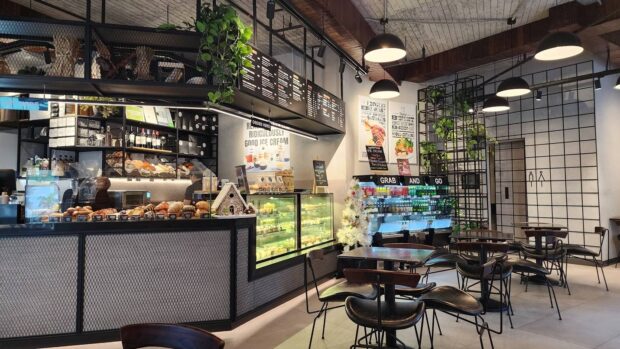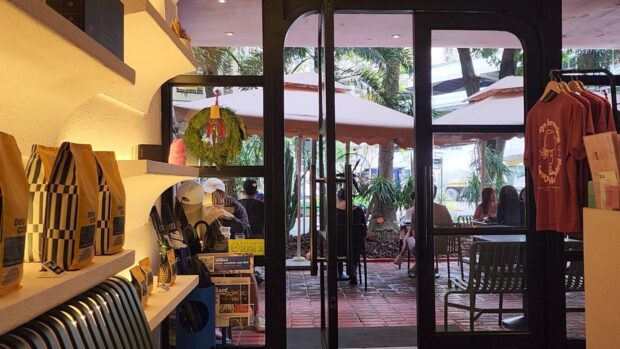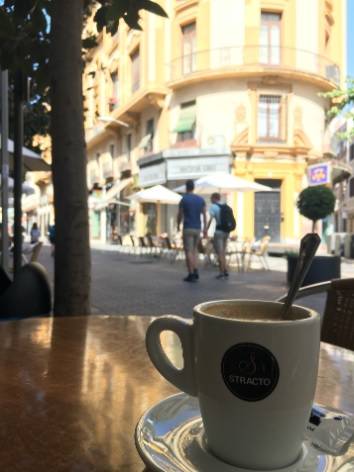Urban caffeine fix

Café space as product (PHOTO BY JUDY LIPAOPAO
An interesting phenomenon has been noticeable in our cities—the proliferation of coffee shops.
Coffee is fast becoming the beverage of choice among Filipinos. The Philippines, in fact, is reported to be the second largest consumer of coffee in Asia (next only to Japan), with 80 percent of Filipinos drinking an average of 2.5 cups per day.
This coffee culture is evident in our cities. Makati City has an estimated one coffee shop for every 4,000 residents. Cebu City is not far behind with one coffee shop for every 5,000 residents. While the steady rise in the number of urban cafés and of coffee consumption may indicate an increase in disposable income among city dwellers, what does the increasing ubiquity of streetside coffee shops signify for our cities?
‘Third place’
Today’s urban citizens frequent coffee shops for more than just a cup of java.
The café itself has become a space for other reasons such as socialization, personal work, or just being visible in the urban scene. International coffee chains have effectively appended their brand with the ambience that they create. Third wave coffee shops have taken the idea to a loftier level, focusing on ethical value chains and high quality, terroir-based specialty beverages. Whether chain or local, these spaces reinforce the notion of coffee as an experience and urban space as product.
Sociologist Ray Oldenburg introduced the term “third place” in 1989 and described it as the place between home (first) and work (second) that people frequent to commune with friends, neighbors, coworkers or even strangers. These are cafés, restaurants, bars, that people frequent as a social space. Third places, as Oldenburg describes them, are where citizens of a community spend pleasurable hours with one another for no specific or obvious purpose. The idea became popular in the sitcom Friends’ Central Perk Coffee.
This growing ubiquity of cafés in our business districts is a response to the increasing need for social interaction and a sense of community in many of our cities.

A specialty café in Makati (PHOTO BY JUDY LIPAOPAO)
Reinforcing community
How important are these third places in urban areas?
It cannot be denied that street-facing shops, cafés, and restaurants not only create life in our cities but also make them feel safer by providing “eyes on the street” as urbanist Jane Jacobs pointed out long ago. As social spaces, cafés can thus be an indicator of the attractiveness of our urban places. But is there a possible relationship between street-level retail and property values?
A recent study by JLPD compared the density of street-level shops in Makati central business district, Bonifacio Global City, and Ortigas Center by doing establishment counts of a 10-ha sample of these districts. Makati CBD and BGC have a retail density of 4.8 and 3.8 establishments per hectare respectively, about 80 percent of which are food and beverage (F&B) outlets.
In comparison, Ortigas Center has a lower retail density (2.5 establishments per hectare) and only 50 percent of which are F&B. The difference could be due to various factors such as the demographic profile of its population, differences in land use, or restrictions imposed on the area.
If vibrancy is an indicator of value and attractiveness, then it may be inferred that increasing street-level retail density (and in particular F&B) can signify higher property values. This strategy, sometimes referred to as café urbanism, is deliberately adopted by some cities to revitalize downtowns.
Several decades ago, on-street retail was banned in business districts. This was the time when single-use zoning was the norm and retail was confined to shopping centers. Today, these older business districts have transformed, now allowing streets to have shops, restaurants, and cafes, thus creating more livable, vibrant downtowns while potentially generating higher value and better market resiliency.

Café beside the plaza (PHOTO BY THE AUTHOR)
Good urbanism
Overall, ground level retail and coffee shops are indicators of many things: high disposable income of a young, upwardly-mobile population, safer streets, increased economic activity, improved property values, and social connection—all signs of good urbanism and quality of city life.
These underscore the ability of a place to lure businesses and attract people in a mutually-reinforcing, virtuous loop that gives a location a distinctive character. Unlike F&B establishments inside malls, local street retail can be destinations, helping create identity to the street or district, and addressing our need for a bigger public sphere and informal public life.
Third places could take many forms–bookshops, convenience stores, restaurants, beauty salons, co-working spaces, or any place where people can gather regularly, creating a micro community. The sweet spot for these locations would be where the streets have light vehicular traffic and ample space for walking, and where buildings have a mix of residential and non-residential uses. Under these conditions, local businesses may be attracted.
While these small, local enterprises contribute positively to cities, their survival is constantly under threat–by bigger commercial interests, by regulations that may prohibit them, or by gentrification that ironically they may inadvertently trigger. It is only when we place a higher value on placemaking that these street front establishments may prosper and our cities thrive.
The author is founder and principal of JLPD, a master planning and design consultancy practice. Visit www.jlpdstudio.com
